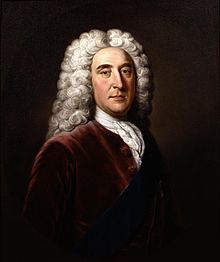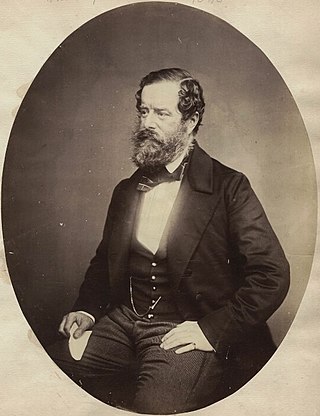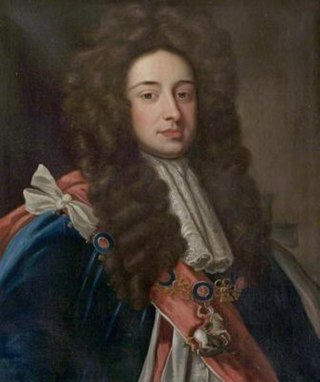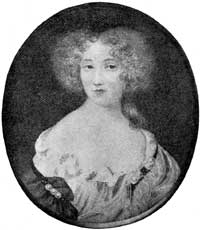| | | | Baron Clinton (8th creation), 1298 |
|
| | | | John Clinton
(d. 1315)
1st Baron Clinton |
|
| | | | | | | | | | | | |
| | | | |
| | | | | | | | | Baron de Clyton, 1330 |
|
| | | | John Clinton
(d. c. 1335)
2nd Baron Clinton | | William de Clinton
(c. 1304–1354)
Earl of Huntingdon, Baron de Clynton |
|
| | | | | | | | | Barony Clynton extinct, 1354 |
|
| | | | John Clinton
(d. 1398)
3rd Baron Clinton |
|
| | | | | | | |
|
| | | | William Clinton
(D.V.P. 1383) |
|
| | | | | | | |
|
| | | | William Clinton
(1378–1431)
4th Baron Clinton |
|
| | | | | | | |
|
| | | | John Clinton
(1410–1464)
5th Baron Clinton
Attainted, 1459; restored, 1461 |
|
| | | | | | | |
|
| | | | John Clinton
(c. 1429–1488)
6th Baron Clinton |
|
| | | | | | | |
|
| | | | John Clinton
(c. 1470–1514)
7th Baron Clinton |
|
| | | | | | | |
|
| | | | Thomas Clinton
(1490–1517)
8th Baron Clinton |
|
| | | | | | | |
|
| | | | Earl of Lincoln (8th creation), 1572 |
|
| | | | Edward Clinton
(1512–1585)
1st Earl of Lincoln, 9th Baron Clinton | | | | | | William Cavendish
(c. 1505–1557) | | Bess of Hardwick
(c. 1527–1608) |
| |
| | | | | | | | | | | | | | | | | | | | | | | | | | | | | | |
| | | | | | | | | | | | | | |
| | | | Henry Clinton
(1539–1616)
2nd Earl of Lincoln, 10th Baron Clinton | | | | | | Charles Cavendish
(1553–1617) | | Frances Cavendish
(1548–1632) | | Henry Pierrepont
(1546–1615) | | Earls & Dukes of Devonshire |
| |
| | | | | | | | | | | | | | | | | | | | | | | | | | |
| | | | | | | | | | | | | | |
| | | | | | | | | | | | | | | Duke of Newcastle-Upon-Tyne (1st creation), 1665 | | | | | | | | | | | Earl of Clare (1st creation, 1624) |
|
Thomas Clinton
(1568–1619)
3rd Earl of Lincoln, 11th Baron Clinton | | Edward Clinton
(?) | | Henry Clinton
(1587–1641) | | William Cavendish
(1592–1676)
1st Duke of Newcastle-upon-Tyne | | Robert Pierrepont
(1584–1643)
1st Earl of Kingston-upon-Hull | | | | | | John Holles
(1564–1637)
1st Earl of Clare |
|
| | | | | | | | | | | | | | | | | | | | | | | | | | | | | | | | |
|
Theophilus Clinton
(1600–1667)
4th Earl of Lincoln, 12th Baron Clinton | | Francis Clinton
(d. c. 1681) | | | | | | | | | | | | William Pierrepont
(c. 1607–1678) | | | | | | John Holles
(1595–1666)
2nd Earl of Clare | | |
|
| | | | | | | | | | | | | | | | | | | | | | | | | | | | | | | | | |
| | | | |
Edward Clinton
Lord Clinton
(1624–1657) | | Francis Clinton
(1635–1693)
6th Earl of Lincoln | | Norreys Fynes
(d. 1693) | | Henry Cavendish
(1630–1691)
2nd Duke of Newcastle-upon-Tyne | | Frances Pierrepont
(1630–1695) | | Grace Pierrepont
(1633–1702) | | Gilbert Holles
(1633–1689)
3rd Earl of Clare |
| | | |
| | | | | | | | | | | | | | | Dukedom of Newcastle-upon-Tyne (1st creation) extinct, 1691 | | | | | | | | | | | | | |
| | | | | | | | |
| | | | | | | | | | | | | | | | | | | | | Duke of Newcastle-Upon-Tyne (2nd creation), 1694 | | | | | |
| | | |
Edward Clinton
(d. 1692)
5th Earl of Lincoln, 13th Baron Clinton | | | | | | | Norreys Fynes
(1651–1736) | | Margaret Cavendish
(1661–1716) | | John Holles
(1662–1711)
Duke of Newcastle-upon-Tyne, 4th Earl of Clare | | Grace Holles
(c. 1668–1700) | | Thomas Pelham, 1st Baron Pelham
(1653–1712) |
| | |
| | | | | | | | | | | | | | | | | | Dukedom of Newcastle-upon-Tyne (2nd creation) extinct, 1711
Earldom of Clare extinct, 1711 | | | | | | | | | | |
| | | | | |
| | | | | | | | | | | | | | | | | | | | | | | | | | | | | Earl of Clare (2nd creation, 1714)
Marquess of Clare and Duke of Newcastle-Upon-Tyne (3rd creation), 1715
Duke of Newcastle-Under-Lyne, 1756 |
| | | | | | | | | | | | | | | |
| | | | | | | | Kendal Fynes
(1692–1740) | | Henry Clinton
(1684–1728)
7th Earl of Lincoln | | Lucy Pelham
(1695–1736) | | Henry Pelham
(1694–1754) | | Thomas Pelham-Holles
(1693–1768)
Duke of Newcastle-upon-Tyne, 1st Duke of Newcastle-under-Lyne, Marquess of Clare, Earl of Clare |
| |
| | | | | | | | | | | | | | | | | | | | | | | | | | | | | Dukedom of Newcastle-upon-Tyne (3rd creation) and Marquessate of Clare extinct, 1768
Earldom of Clare extinct, 1768 |
| | | | | |
| | | | | | | | | | | | | | | | | | Duke of Newcastle-Under-Lyne, 1756
(succeeded by special remainder, 1768) | | | | | |
|
| | | | | | | | Norreys Fynes
(1720–1764) | | George Clinton
(1718–1730)
8th Earl of Lincoln, Lord Fynes | | Henry Pelham-Clinton
(1720–1794)
2nd Duke of Newcastle-under-Lyne, 9th Earl of Lincoln | | Catherine Pelham
(1727–1760) |
| |
| Earl of Clare (3rd creation), 1795 | | | | | | | | | | | | | | | | | | | | | |
| | | | | | | | |
John FitzGibbon
(1748–1802)
1st Earl of Clare | | The FitzGibbon Earls of Clare are seemingly unrelated to the Holles family, the previous Earls of Clare. | | Charles Fynes
(later Fynes-Clinton)
(1748–1827) | | Henry Pelham-Clinton
(1750–1778)
styled Earl of Lincoln | | Thomas Pelham-Clinton
(1752–1795)
3rd Duke of Newcastle-under-Lyne, 10th Earl of Lincoln |
|
| | | | | | | | | | | | | | | | | | | | | | |
| | | | |
John FitzGibbon
(1792–1851)
2nd Earl of Clare | | Richard Hobart FitzGibbon
(1793–1864)
3rd Earl of Clare | | Clinton James Fynes-Clinton
(later Fiennes-Clinton)
(1792–1833) | | | | | | Henry Pelham-Clinton
(1785–1851)
4th Duke of Newcastle-under-Lyne, 11th Earl of Lincoln |
|
| | | | Earldom of Clare extinct, 1864 | | | | | | | | | | | | | | | | | | | | | | | |
| | | | | | | | |
| | | | | | | | Henry Fiennes-Clinton
(1826–1911) | | | | | | Henry Pelham-Clinton
(1811–1864)
5th Duke of Newcastle-under-Lyne, 12th Earl of Lincoln | | | | | | Charles Pelham-Clinton
(1813–1894) |
|
| | | | | | | | | | | | | | | | | | | | | | | | | | | | | |
|
| | | | | | | | Charles Edward Fiennes-Clinton
(1855–1888) | | | | | | Henry Pelham-Clinton
(1834–1879)
6th Duke of Newcastle-under-Lyne, 13th Earl of Lincoln | | | | | | Charles Pelham-Clinton
(1857–1911) |
|
| | | | | | | | | | | | | | | | | | | | | | | | | | | | | | |
| | | | |
| | | | | | | | Edward Henry Fiennes-Clinton
(1886–1916) | | | | | | Henry Pelham-Clinton
(1864–1928)
7th Duke of Newcastle-under-Lyne, 14th Earl of Lincoln | | Francis Pelham-Clinton-Hope
(1866–1941)
8th Duke of Newcastle-under-Lyne, 15th Earl of Lincoln | | Guy Pelham-Clinton
(1894–1934) |
|
| | | | | | | | | | | | | | | | | | | | | | | | | | | | | |
|
| | | | | | | | Edward Horace Fiennes-Clinton
(1913–2001)
18th Earl of Lincoln | | | | | | | | | | Henry Pelham-Clinton-Hope
(1907–1988)
9th Duke of Newcastle-under-Lyne, 16th Earl of Lincoln | | Edward Pelham-Clinton
(1920–1988)
10th Duke of Newcastle-under-Lyne, 17th Earl of Lincoln |
|
| | | | | | | | | | | | | | | | | | | | | | | | | Dukedom of Newcastle-upon-Tyne extinct, 1988 |
|
| | | | | | | | Edward Gordon Fiennes-Clinton
(1943–1999)
Lord Fynes |
|
| | | | | | | | | | | | | | | | |
| | | | |
| | | | | | | | Robert Edward Fiennes-Clinton
(b. 1972)
19th Earl of Lincoln | | William James Howson
(b. 1980) |
|
| | | | | | | | | | | | Heir presumptive to the Earldom of Lincoln |
|
















